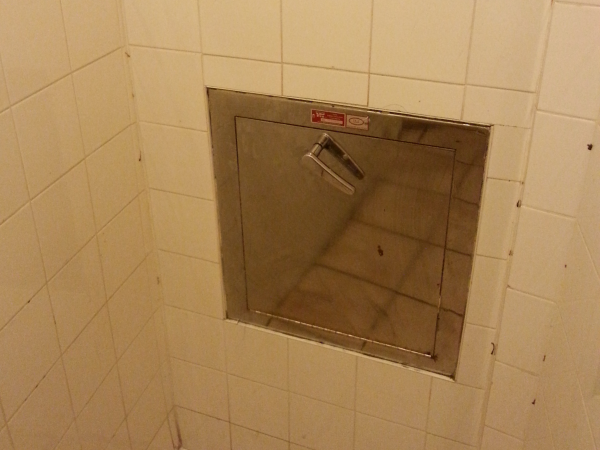“Recycling? Yeah we tried it for a while, but it just was too… complicated.”
It’s a commonly-heard phrase in apartment complexes where recycling is often a troublesome process that few decide to partake in. Apartment dwellers are often blamed with not participating in recycling programs and not getting with the program, so to speak, yet there is little consideration of the infrastructure and experience of recycling which is so important in facilitating the recycling process.
To illustrate, let’s begin in the kitchen of our apartment units. The kitchen is usually the location of the main garbage bin and the most likely location of the recycling bin. Choosing the location for the garbage bin in particular requires an economizing of space. As such, it is usually placed underneath the sink, or attached to the interior of a counter cabinet door. Where does recycling go? It is probably shoved into some corner beside the pots, the pans and the extra-large bag of dough/rice – it’s an afterthought. There is little room to fit an often flat, or cubic bin of any appropriate size in this kind of kitchen and there are few affordable, attractive or accessible options to solve this issue.
After you have perhaps shoved your recycling into an Ikea bag sitting in some mysteriously stained, semi-occupied space, it is now your task to take this material down to the recycling facility. In most buildings, there is no floor-level recycling room. What’s worse is that recycling ‘facilities’ are often just dumpsters in inaccessible locations (down steps, in areas that feel unsafe, unlit spaces) that are often filled with a building-load of garbage and stench. Not your run-of-the-mill recycling bin.
Still, there is something deeper to the question of apartment recycling. A genuine problem is the experience of the recycling process, particularly the movement through spaces while carrying waste.
Within a building, there are a series of semi-public spaces that are simultaneously shared and yet quite anonymous. The nature of these spaces (and the manners we attribute to them) support certain behaviours, and inhibit others. For example, take the space around the elevator on your (hypothetical or real) floor. Imagine walking to the elevators, pressing the button and waiting. Your recycling is pretty exposed, or better yet, you’re carrying a soft bag of organics, that, regardless of your careful attention to the cleanliness of the organics bin, is still somehow wet and smelly.
The elevator arrives with a chime, but it is full. You awkwardly smile and let it go with an off-kilter wave and a head-bow-thing. Then Mary (who you know from one conversation in the laundry room) from unit 1506 comes over but keeps an excessive distance from you as she waits for the elevator. The elevator comes, and you find the farthest corner to wait in. Mary decides to wait for the next elevator. You press the button for the ground floor and down you go. At the 5th floor, someone enters and regrets it. They smile and stand far from you, looking at their phone. At the 2nd floor, and that old lady with pinkish hair gets on slowly. She utters “damn, it smells in here”.
She is talking about you.
You all reach the ground floor and your fellow residents run out, bashing into each other trying to escape first. You gingerly step into the lobby, and see a party of people coming back from church, a set of kids running in circles and some tough guy waiting for his ride. For a moment everyone’s head turns and you stand opposite to them, wearing your sweats, holding your waste. You feel a quiet judgement.
You turn your head and walk through the lobby, arriving at an unmarked metal door. Opening it, you feel a deep chill hit from the drafty door to outside. You walk out, into the cold towards the large dumpsters which sit behind a wooden fence. You find your footing, and swing your waste up, chucking it over the fence and into the open bin. You run back into the building before your feet freeze. You did it!
How did that feel? While this is an obvious caricature of actual recycling, it is still an indication of the rich and delicate interplay between recycling infrastructure, the consciousness of others and the unspoken manners of the spaces we inhabit. Any intervention will inevitably have to answer to this interplay, which differs in each and every building.


